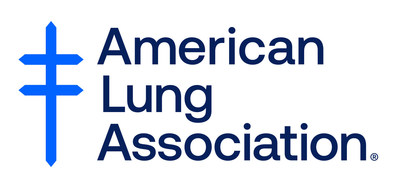As Students Go Back to School, New Study Highlights the Importance of Clean Air in Classrooms
PR Newswire
CHICAGO, Aug. 5, 2025
American Lung Association Collaborates with Minnesota Charter School and Carrier to Support Student Health and Learning Environments
CHICAGO, Aug. 5, 2025 /PRNewswire/ -- With students across the country preparing to head back to school in the weeks ahead, today the American Lung Association, in collaboration with Lakes International Language Academy (LILA), a charter school in Forest Lake, Minnesota, and Carrier, global leader in intelligent climate and energy solutions, released findings from an indoor air quality (IAQ) study in schools, reinforcing the urgent need for clean indoor air to support student health and academic success.
Children and adolescents spend up to half of their waking hours in school, where indoor air can be two to five times more polluted than outdoor air. Poor IAQ has been linked to increased illness, asthma attacks, absenteeism and even decreased academic performance.
"Clean indoor air isn't a luxury — it's a necessity for healthy, thriving students and staff," said Harold Wimmer, President and CEO of the American Lung Association. "Through this collaboration, we gained valuable insight into how schools can take an approach to understanding IAQ, a critical first step in creating a better learning environment for every child."
Unlike homes or offices, schools are more densely occupied and often house multiple activities under one roof — from kitchens and science labs to gyms and pools. Aging infrastructure can compound IAQ issues, making proactive management especially important.
"Carrier is proud to collaborate with the American Lung Association to help schools create healthier, more productive learning environments," said Gaurang Pandya, President, Climate Solutions America, Carrier. "With students spending over 90% of their time indoors, indoor air quality isn't just important — it's essential. Carrier offers the full suite of solutions schools need to improve air quality, support student well-being, and build trust with families and communities."
The study was conducted at LILA, an International Baccalaureate World School serving pre-K through 12th grade students across three campuses. Key components of the study included:
- Installation of 137 continuous air quality monitoring sensors throughout the campuses to track carbon dioxide, particulate matter, volatile organic compounds (VOCs), temperature and relative humidity.
- Building walkthroughs using the EPA IAQ Tools for Schools Action Kit at two campuses.
- Faculty-completed classroom checklists adapted from the EPA toolkit to gain insights from teachers' perspectives.
The study revealed several actionable insights:
- Carbon dioxide levels rose toward the end of the school day but can be managed with simple adjustments to HVAC schedules.
- Teacher surveys and walkthroughs, combined with Carrier solutions including Carrier Abound real-time sensor data, helped identify sources of pollutants, including car exhaust and cleaning supplies — allowing for targeted interventions.
- Moisture control and regular HVAC maintenance were identified as key factors in maintaining good air quality and preventing mold growth.
- Continuous monitoring allowed facility staff to make informed, real-time decisions about ventilation and outdoor air intake.
The American Lung Association urges school leaders to prioritize indoor air quality improvements as part of overall student health and safety planning.
"To ensure that students and teachers can focus, learn and thrive, we must treat indoor air quality as essential infrastructure," said Wimmer. "This study demonstrates that taking a holistic, data-driven approach to assessing a school's indoor air quality is an important first step in creating healthier learning environments for all."
Read the full case study and explore tools to improve indoor air quality in your school at Lung.org/CASC.
About the American Lung Association
The American Lung Association is the leading organization working to save lives by improving lung health and preventing lung disease through education, advocacy and research. The work of the American Lung Association is focused on four strategic imperatives: to defeat lung cancer; to champion clean air for all; to improve the quality of life for those with lung disease and their families; and to create a tobacco-free future. For more information about the American Lung Association, which has a 4-star rating from Charity Navigator and is a Platinum-Level GuideStar Member, call 1-800-LUNGUSA (1-800-586-4872) or visit: Lung.org. To support the work of the American Lung Association, find a local event at Lung.org/events.
CONTACT: Jill Dale | American Lung Association
P: 312-940-7001E: Jill.Dale@Lung.org
![]() View original content to download multimedia:https://www.prnewswire.com/news-releases/as-students-go-back-to-school-new-study-highlights-the-importance-of-clean-air-in-classrooms-302521005.html
View original content to download multimedia:https://www.prnewswire.com/news-releases/as-students-go-back-to-school-new-study-highlights-the-importance-of-clean-air-in-classrooms-302521005.html
SOURCE American Lung Association



